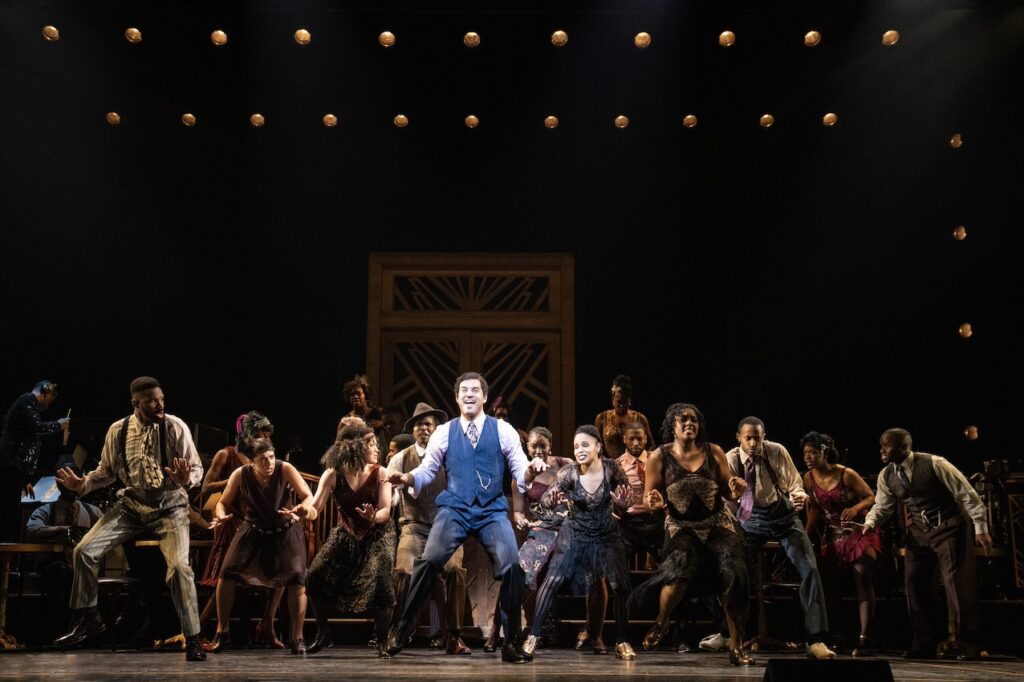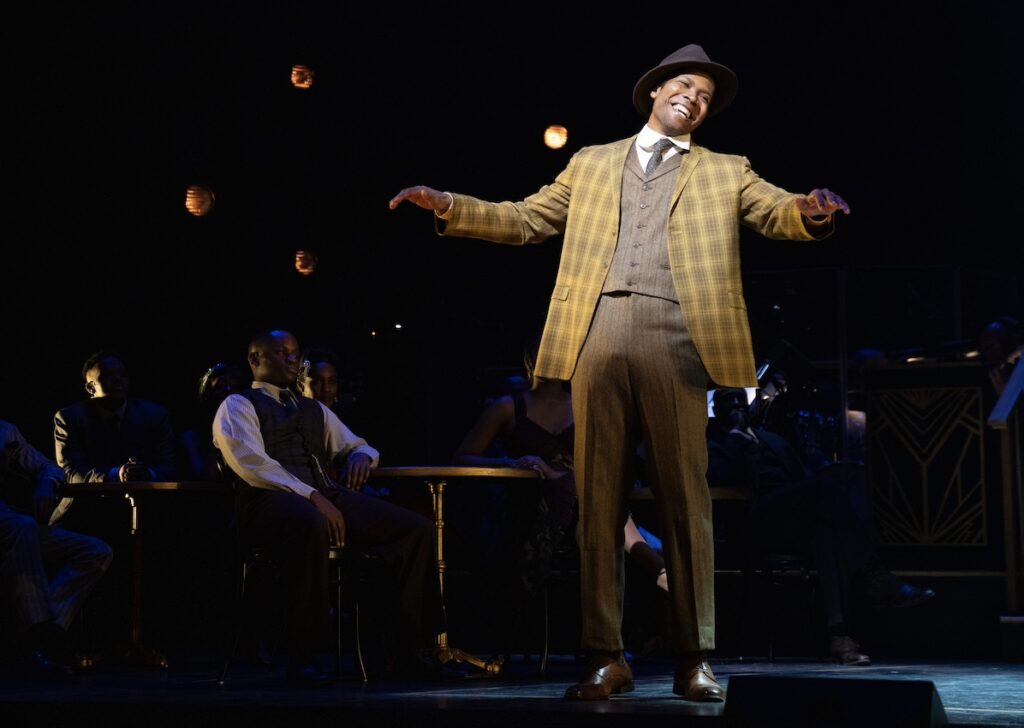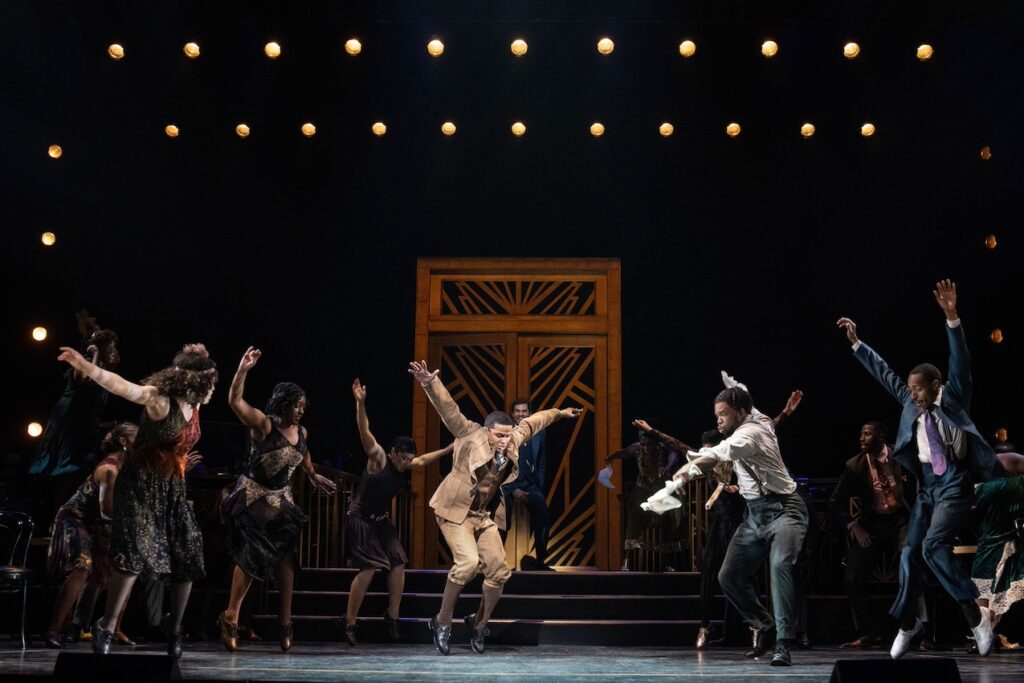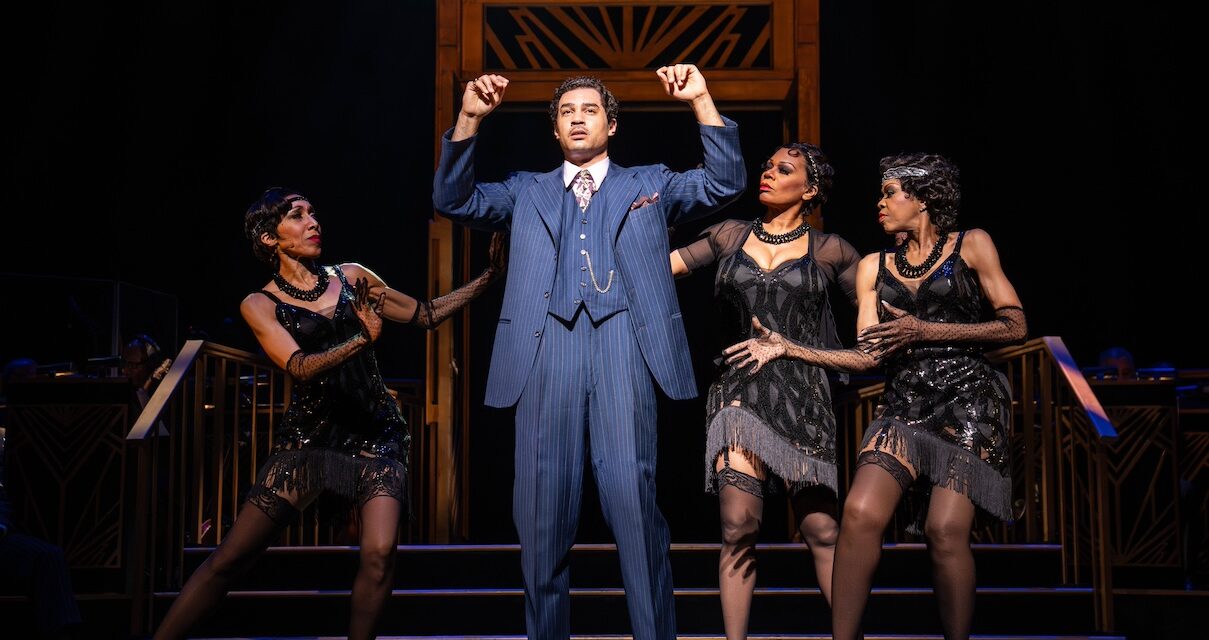Theater Review by Brian Scott Lipton . . . .
For decades, musical theater has asked us to sympathize or identify with—and perhaps even forgive—some very deeply flawed men, from Gaylord Ravenal to Billy Bigelow, Franklin Shepard, and even The Phantom of the Opera.
That task was asked of us again in 1991 with the Broadway premiere of Jelly’s Last Jam, a striking biomusical about the legendary if none-too-pleasant jazz pianist and composer Jelly Roll Morton. Now, City Center Encores! is making this same request of us with Robert O’Hara’s handsomely mounted, gorgeously cast, and incredibly polished revival. (Could this show really have been put together in ten days? Really?)

The good news is you will be mightily entertained—and even astounded by the intricate choreography (by Edgar Godineaux and Dormeshia, the latter handling the amazing tap routines). Still, you might not be convinced that Morton deserves our absolution—or the credit he repeatedly insists on as “the inventor of Jazz.”
While he’s well played by the triple-threat Nicholas Christopher (who leans a little too heavily into Morton’s nastiness, perhaps having been influenced by spending the last year in Sweeney Todd), the actor somehow lacks the “star quality” of the role’s originator, Gregory Hines, or even his replacement, Brian Stokes Mitchell. Sometimes, if “it” is not on the stage, it doesn’t matter what’s on the page.
Indeed, George C. Wolfe’s clever, award-winning book has Morton being forced to relive his life—the good and the bad—after his untimely death at the age of 50 (as a result of an earlier stab wound). We watch, often slack-jawed, as Morton struggles to make his case for ascension to the Chimney Man (Billy Porter, dialing the sass up to 11), a mysterious figure who gets to decide whether, after leaving a purgatorial nightclub, Morton goes to the pearly gates or the fiery pits below.


And while it’s far from the whole truth, the story hits some of the highlights of Morton’s behavior—primarily that Morton believed that his Creole heritage (meaning his European-type education and very light skin) made him so vastly superior to his fellow Negroes that he tramples on them verbally or physically. Indeed, no one is exempt from his wrath or contempt, from trumpeter Buddy Bolden (Okieriete Onoadowan, making the most of a small role) to best friend Jack the Bear (a touching John Clay III) and even his lover, club owner and singer Anita (the incredible Joaquina Kalukango, who needs her own star vehicle ASAP!).
Wolfe also does his best to provide another explanation for Morton’s behavior, stating outright that his inability to love—himself or anyone else—stems from his banishment from his family, notably his stern “Gran Mimi” (an extraordinary Leslie Uggams in a glorious cameo), after being caught playing non-classical music in a lower-class nightclub. Indeed, the sequence where that transformation happens takes place during a song called “The Whole World’s Waiting to Sing Your Song,” featuring a spectacular turn by Alaman Diadhious as a fleet-footed Young Jelly, that turns out to be among the show’s musical highlights.


For the most part, though, the show’s score—in which Susan Birkenhead put lyrics to Morton’s music (along with some by the late Luther Henderson) is primarily serviceable rather than sensational, with the exception of two big group numbers, “That’s How You Jazz” and “Dr. Jazz,” and the worldly “Lovin is a Lowdown Blues,” performed by three sexy ladies known as The Hunnies—and played by Mamie Duncan-Gibbs, Stephanie Pope Lofgren and Allison M. Williams, all of whom played the exact same roles in the original Broadway production. Nonetheless, all of the music gets first-class treatment from guest musical director Jason Michael Webb (conducting a 15-piece orchestra).
The show’s physical production is equally first-rate. Clint Ramos’ nightclub set is dominated by an art-deco style door that is both inventive and terrifying, if you look closely; its only drawback is that there may not be quite enough dance floor for this unusually large ensemble. Dede Ayite’s costumes, as is consistently the case, are both stunning and period-appropriate (although I suspect Porter’s gender-bending outfit may have come from his own closet) and Adam Honore’s lighting design truly shines brightly. (The sound design, by Megumi Katayama, does need a bit of fine-tuning.)
Sweet, sour, hot, cold: that’s Jelly Roll Morton. Spread it around.
Jelly’s Last Jam. A limited City Center Encores! engagement through March 3 at New York City Center (131 West 55th Street, between Sixth and Seventh Avenues). www.nycitycenter.org
Photos: Joan Marcus


















